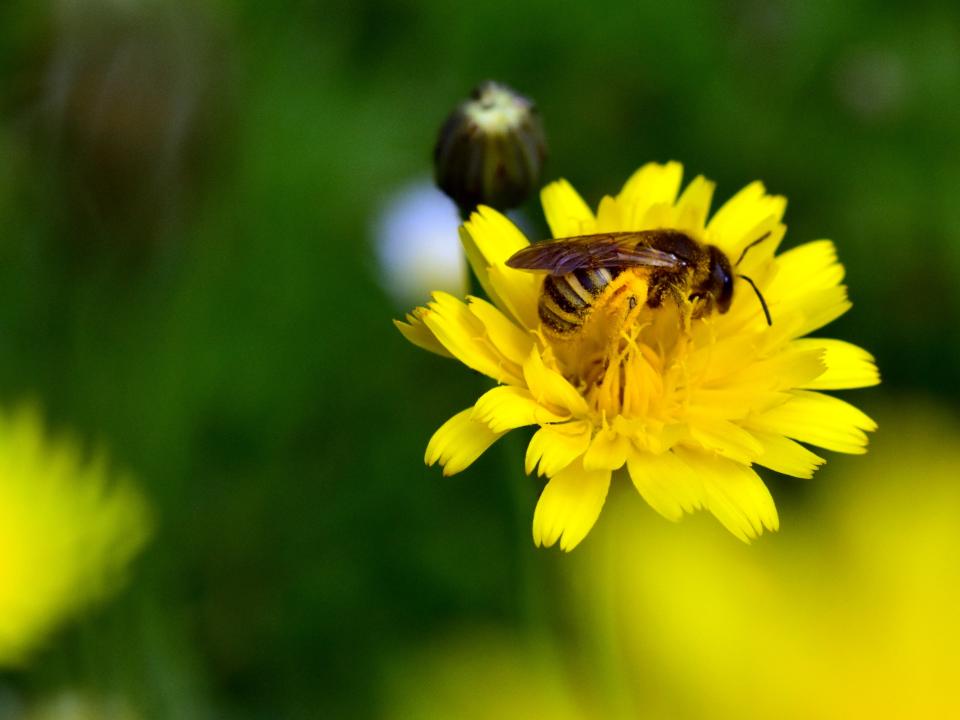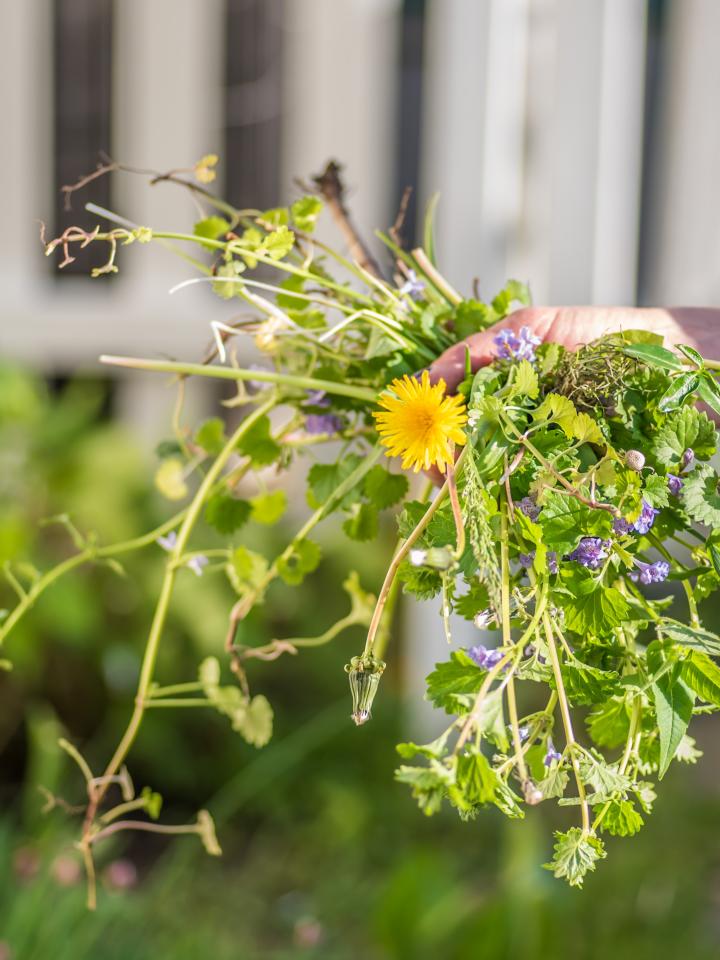WHAT ARE WEEDS?
Weeds is a general term for plants that are considered undesirable. They grow where you don't want them, such as on the lawn, against the side of your house, between stone tiles or in your garden border.
There's no biological definition of weeds or defined list of plants that qualify as such. It's a subjective term, as one person's unwanted plant is another's treasure. Weeds are situation- and person-dependent.
how to prevent weeds
The best way to fight weeds is to prevent them. Check out the tips below to prevent weeds wrecking your borders, between your paving stones and your lawn:
PREVENTING WEEDS IN garden BORDERS
- Plant ground cover: one of the best tricks to prevent weeds is to keep the soil covered, so that weeds get too little light and space to thrive. You do this by planting evergreen ground covers (low, creeping plants) and/or dense-growing plants. Think for example of stork flower (good for sunny conditions), lady's mantle (good for semi-shaded conditions) or creeping zen green (good for shady conditions).
- Cover the soil with a mulch layer: another way to cover the soil is to apply a thick layer of mulch (organic material such as compost, cocoa shells or decorative bark) in the spring. This not only stops weeds, but also reduces water evaporation and keeps the soil underneath airy.
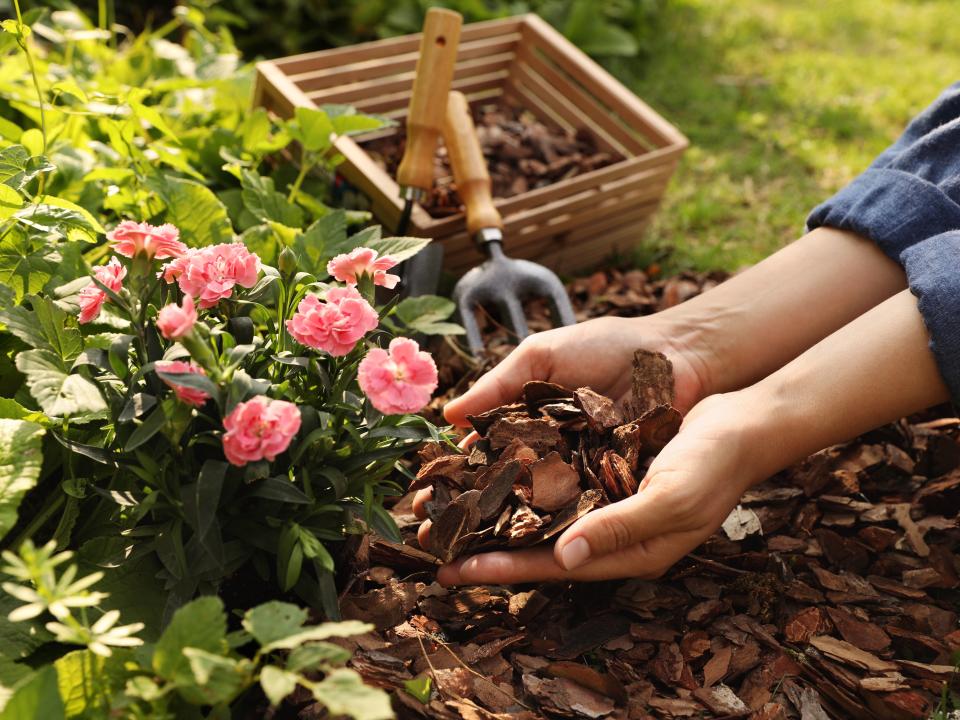
PREVENTing WEEDS BETWEEN PAVING stones
- Ensure good drainage (make sure no water remains on your pavement, path or patio after a rain shower).
- Limit the number of cracks between your paving, such as choosing large tiles to reduce the number of cracks weeds could sprout from, and clean them regularly.
- Use weed-resistant grout when laying your path, patio or pavement.
- Place a root canvas under the paving to prevent weeds from growing through it. Note that while root canvas can prevent weeds from growing underneath, but they can still find their way through the gaps and find a way to self-sow, so stay vigilant.
- Go over your pavement, path or patio regularly with a broom. That way, you'll remove seeds that have blown in and get rid of them before they sprout.
pREVENTING WEEDS on a LAWN
- Mow the grass regularly: make sure the grass doesn't grow too long, as this will allow weeds to flourish. Don't mow the grass too short either, as this allows weeds to grow more easily.
- Fertilise your grass according to its needs: apply the right fertiliser for your lawn. You should look mainly at the nutritional value and acidity. A healthy lawn has a pH value of between 6 and 7. Test the acidity and nutritional value with a pH meter and/or soil test, for sale at garden centres.
- If the pH is below 6, you may need to add lime.
- If the pH is higher than 7, it may be necessary to add iron.
- Scarify the lawn annually. A scarifier cuts open the soil and removes moss and dead grass. This allows more light and air to reach the grass roots, which promotes grass growth, reduces bare spots and prevents weed growth.
- Grass seeding: sow bare spots properly (e.g. after scarifying) to allow them to regrow. Weeds have more opportunity to grow where grass has worn away.
- Water the lawn during drought: when a lawn is weakened and lacks nutrients, it's less resistant to weeds.
- Good drainage: make sure your lawn has good drainage. If rainwater doesn't drain away easily, the lawn is more susceptible to moss and weeds.
Tip: Weeds grow for a reason. Look at the type of weeds you have and read into what this says about the quality of your soil. For example, do you have a lot of clovers in your lawn? That could be due to a nitrogen deficiency and/or a lawn that's cut too short.
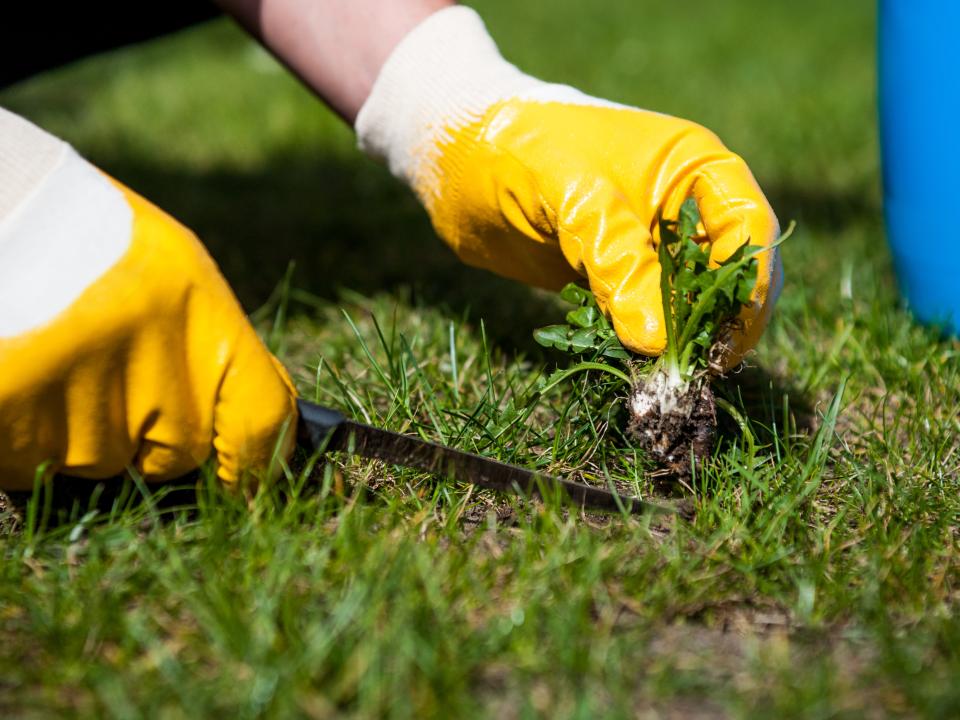
how do you control weeds naturally?
Here's how to remove weeds naturally, whether they're growing between stones, in your vegetable garden or on your lawn:
- Weeding by hand: using your hands (and possibly a weeding stick or trowel) to remove weeds from borders, between paving and in grass may not be a chore you're looking forward to, but it is effective! The important thing is to remove the entire root of the plant so it doesn't regrow.
- Scarifying: by scarifying the lawn, you remove moss and other weeds as much as is possible from the grass. After scarifying, spread grass seed on the lawn to optimise growth and re-grow any bare spots.
- Hoeing: hoeing borders works well to loosen the soil and cut weeds, preventing them from taking root and drying out. Note that hoeing is especially effective for annual weeds. Stubborn weeds (with deep roots) often just continue growing if a piece of root remains in the ground.
- Scraping away weeds between paving: scrape away weeds, roots and all, with a narrow weed scraper or an old knife.
- Want to remove stubborn weeds between tiles, gravel or other materials? You can try pouring boiling water over them. The heat of the water will destroy the plant cells, causing them to dry out.
- Suffering from deposits of green on tiles or wooden furniture? Use baking soda against weeds and green deposits. Dissolve a few tablespoons of baking soda in boiling water and scrub away!
- Do the weeds keep coming back? If so, use a natural, biodegradable pesticide if you need to. Avoid chemical pesticides so as not to burden the environment unnecessarily. Ask a garden expert for advice.
Note: It's sometimes advised to use vinegar to kill weeds. We advise against this because using vinegar kills many beneficial insects in the soil, disturbing the ecology.

TIPS FOR REMOVING WEEDS
If you're locked in battle with weeds, check out our weed removal tips below:
- Don't wait too long to remove weeds. Don't allow weeds to flourish, as this will minimise the spread of seeds.
- Try to pull out weeds root and stem. Is the root too deep (as is often the case with dandelions)? Then use a shovel, trowel a weeding stick. Place it next to the weeds in the ground and wiggle back and forth until the root comes loose.
- Throw weeds carefully upside down into a bucket, taking care not to spread seeds by throwing them.
- Wear gardening gloves when removing weeds, as weeds can be prickly or sometimes contain sap that cause skin irritation.
- Never throw weeds on the compost heap, but in the green recycling container to prevent further spread.
- The best time to weed is early in the season, as soon as possible after you see weeds starting to grow (from February-March through summer). Ideally, remove weeds on a dry day when the soil is slightly moist.
- Do your knees hurt from weeding? Use a knee bench or knee pad.
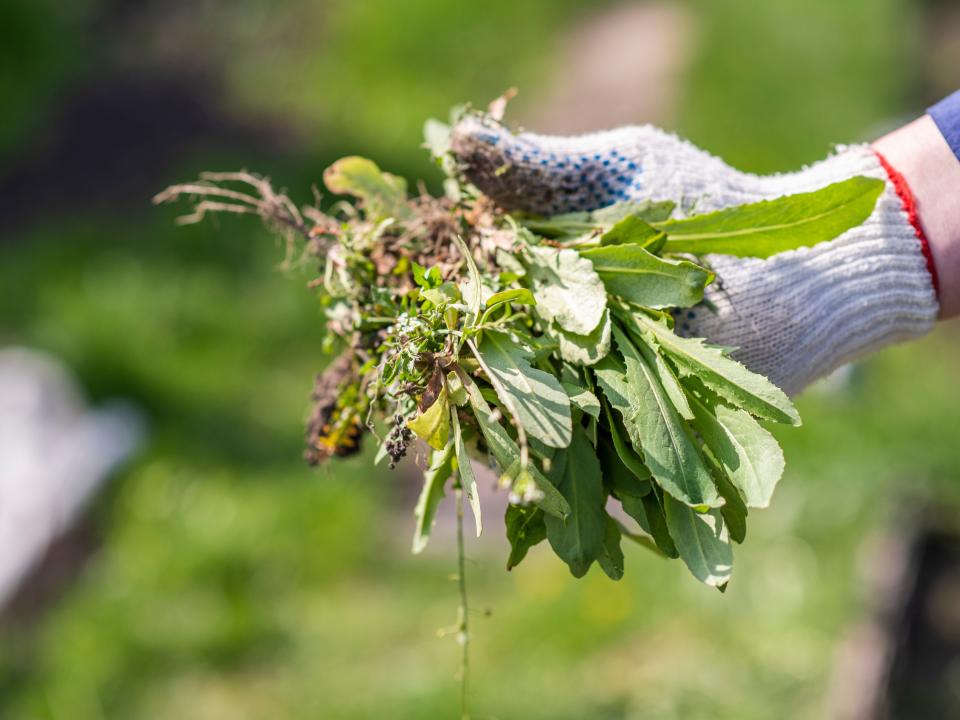
why do you need to control weeds?
There are several reasons that it's important to control weeds:
- Weeds can take nutrients, water and light away from more desirable plants and cause them to grow less well.
- If you don't remove weeds from your lawn, they quickly spread, causing the grass to be overgrown by weeds.
- Weeds can be an eyesore and look messy, ruining the design and arrangement of your outdoor space.
- If you do nothing to control weeds, they spread very quickly and you'll get more and more of them.
where do weeds come from?
Weeds grow because plants sow themselves through their seeds. This happens in the following ways:
- Through the wind. Seeds of weeds blow away and end up further away.
- By animals, such as birds. They take seeds with them and drop them further on.
- By humans. We can carry seeds with us on clothes or shoes and spread weeds that way.
how do you recognise weeds?
Weeds usually grow very quickly, in all conditions (including extremely wet and dry periods), are very hardy and spread easily. But remember: plants labelled as weeds by some are actually seen as desirable by others. Think, for example, of people who prize a wild garden full of plants such as poppies and daisies.
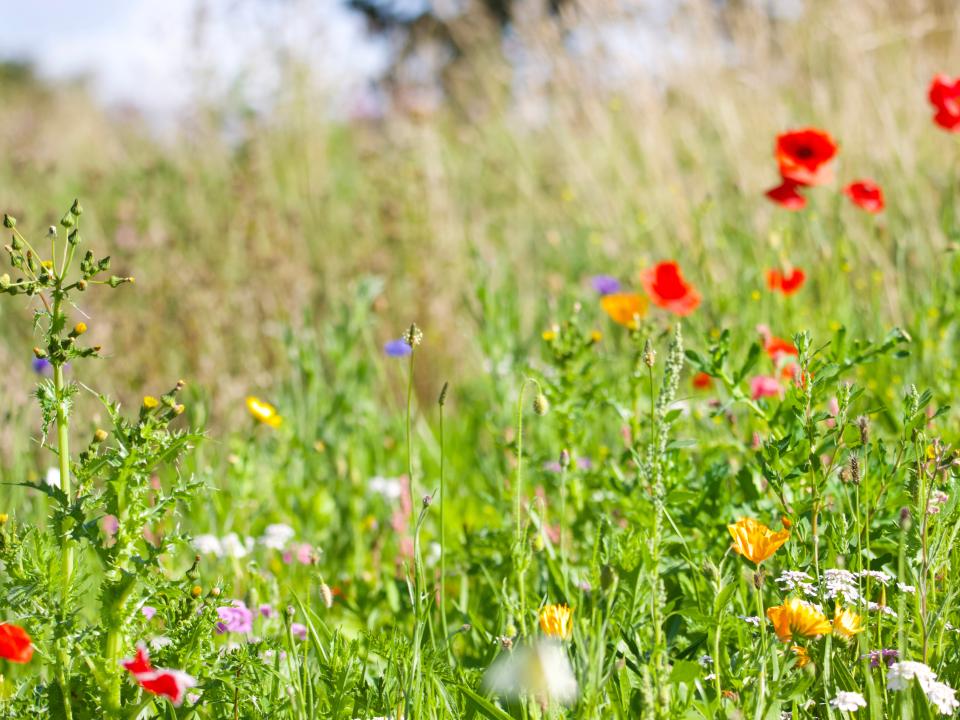
WHAT TYPES OF WEEDS are there?
As what is considered a weed is subjective term (a weed to one person is beautiful to another), this list includes plants that are considered weeds by most people. There are many types of unwanted plants, but these are the most common: dandelion, clover, milk thistle, daisy, stinging nettle, sagebrush, bird's nest, small field cress, couch grass, buttercup, ground elder, field thistle and horsetail.
weeds are good for biodiversity
No one wants a garden completely overtaken by weeds (unless that's your jam, and more power to you if so!) but don't be blinded by a desire to have a completely tidy and weed-free garden. Some weeds look beautiful, such as bright poppies and cheerful daisies, and others attract bees, which increases biodiversity. Maybe try giving weeds a chance!
